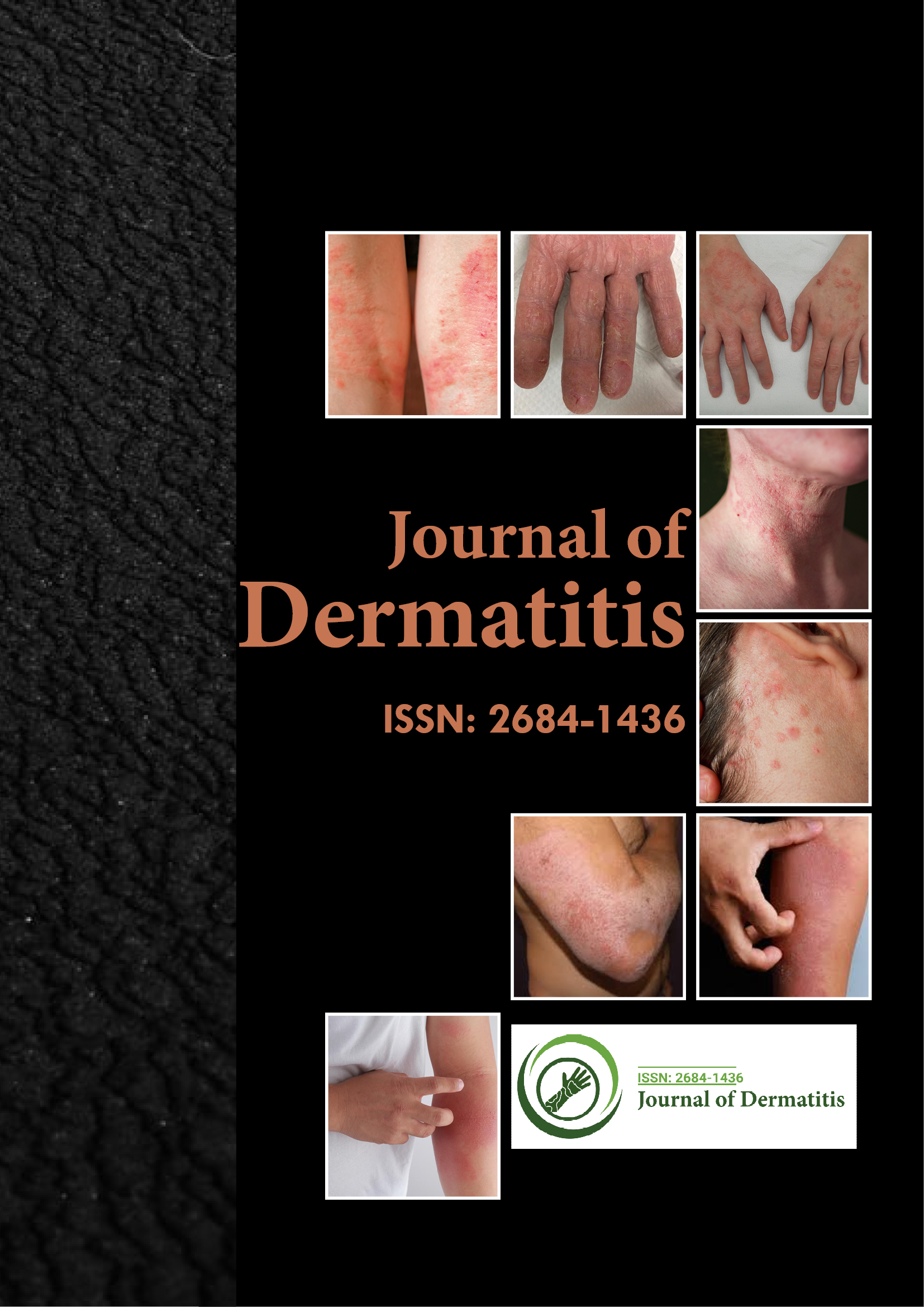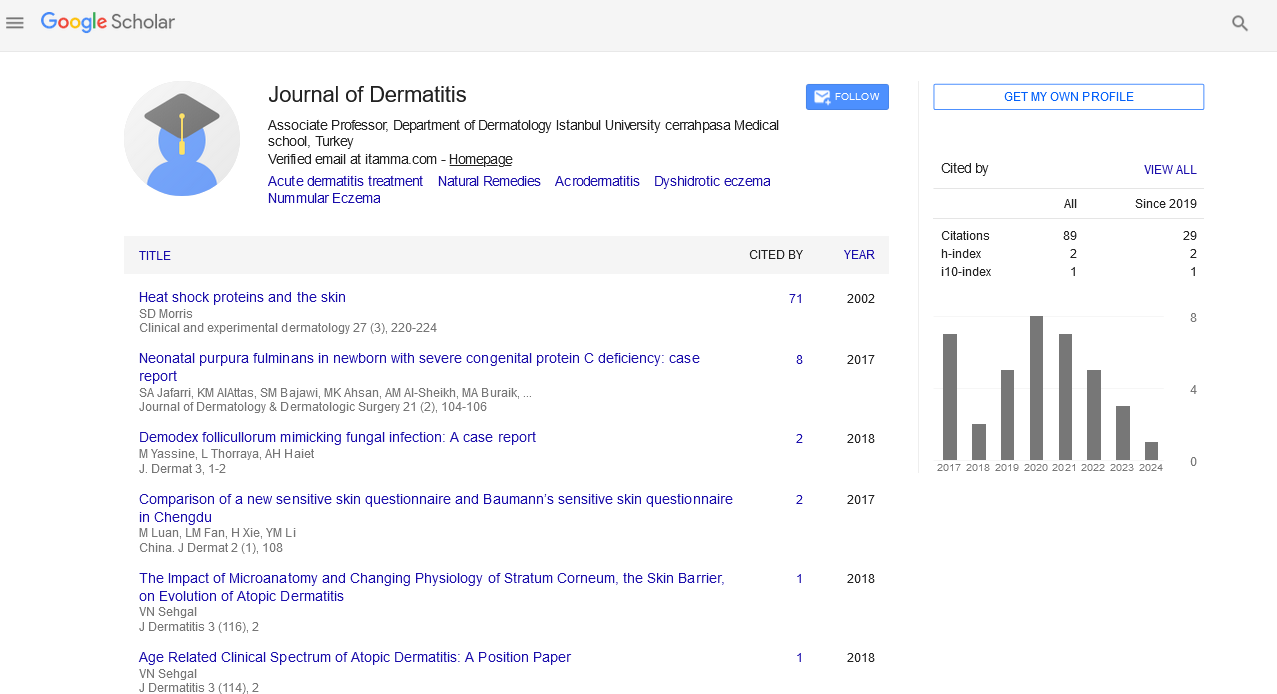Indexed In
- RefSeek
- Hamdard University
- EBSCO A-Z
- Euro Pub
- Google Scholar
Useful Links
Share This Page
Journal Flyer

Open Access Journals
- Agri and Aquaculture
- Biochemistry
- Bioinformatics & Systems Biology
- Business & Management
- Chemistry
- Clinical Sciences
- Engineering
- Food & Nutrition
- General Science
- Genetics & Molecular Biology
- Immunology & Microbiology
- Medical Sciences
- Neuroscience & Psychology
- Nursing & Health Care
- Pharmaceutical Sciences
Perspective - (2024) Volume 9, Issue 1
Understanding Skin Graft-Versus-Host Disease Post-Transplant
Ayuish Varnine*Received: 02-Mar-2024, Manuscript No. JOD-24-26015; Editor assigned: 05-Mar-2024, Pre QC No. JOD-24-26015 (PQ); Reviewed: 21-Mar-2024, QC No. JOD-24-26015; Revised: 27-Mar-2024, Manuscript No. JOD-24-26015 (R); Published: 05-Apr-2024, DOI: 10.35248/2684-1436.24.9.232
Description
Graft-Versus-Host Disease (GVHD) is a complicated illness that frequently develops following bone marrow or allogeneic stem cell transplantation, in which the recipient's tissues are attacked by the donor immune cells. The most frequently impacted organ is the skin, which can have both acute and long-term cutaneous impacts. Usually appearing during the first 100 days of transplantation, acute GVHD is typified by a red, maculopapular rash that can blister and peel severely, resembling toxic epidermal necrolysis or a severe sunburn.
When GVHD persists for more than 100 days, it can cause thicker, tighter skin and changes in pigmentation, akin to scleroderma. Additional signs and symptoms include poikiloderma, which is characterized by regions of hyperpigmentation, hypopigmentation, telangiectasia, and atrophy, and lichenoid eruptions, which are scaly, itchy plaques resembling lichen planus.
The quality of life of patients is greatly affected by these cutaneous manifestations, which can also result in additional issues like infection and limited mobility. Immunosuppressive medications, such as corticosteroids and calcineurin inhibitors, are frequently used in treatment to regulate the immune system and treat symptoms. Dermatological symptoms are a prominent indication of Graft Versus Host Disease (GVHD). Since the skin is often the first organ impacted by GVHD, dermatologists are vital members of the patient's care team.
GVHD occurs when donor immune cells recognize and attack host antigens. The host-related immunologic insult is referred to as GVHD. The primary cause of GVHD is Hematopoietic Stem Cell Transplantation (HSCT), which is more often allogeneic than autologous. To induce a graft-Versus-tumor response in allogeneic hematopoietic stem cells, donor T cells specifically target populations of malignant hematopoietic cells. On the other hand, GVHD occurs when non-hematopoietic tissues of the recipient are attacked. Numerous factors, including as the degree of T-cell response and the genetic compatibility between the donor and the host, affect the balance between GVHD and a graft-Versus-tumor impact.
In between 40 and 60 percent of instances, GVHD can develop in individuals who get HSCT. Blood transfusions, maternal fetal transfusions, and solid organ transplants have also been connected to GVHD. Numerous sorting procedures are used to remove potential GVHD effector cells from donor marrow before to transplantation; nonetheless, the rates of GVHD are not appreciably reduced by these methods. Despite efforts to modify the immune response before, during, and after transplantation, GVHD remains the primary cause of morbidity and death following HSCT.
Prior to the emergence of chronic Graft Versus Host Disease (GVHD) during the first 100 days following transplantation, acute GVHD was the predominant manifestation. More recently, the National Institutes of Health Working Group developed consensus criteria based on clinical data, as opposed to employing the 100-day restriction to differentiate between the two entities. The three primary symptoms of acute GVHD are hepatitis, enteritis, and dermatitis; chronic GVHD is characterized by an autoimmune disease that affects multiple organs.
Acute GVHD frequently starts out as a dispersion of erythematous macules and papules that eventually cover a greater portion of the body's surface area as the severity of the condition increases. Acute GVHD in its most severe form can cause bullae and erythroderma. In acute GVHD, the degree of liver and gastrointestinal system involvement affects the outcome of patients. It is unusual to observe gastrointestinal or liver symptoms of GVHD in the absence of cutaneous involvement. A late stage of acute GVHD may persist on its own or progress into chronic GVHD. The majority of the skin is affected by chronic GVHD, which can result in scleroderma or lichen planus-like eruptions. Treatment for sclerodermatous GVHD can be challenging and involves a broad variety of clinical symptoms.
Bone marrow transplant patients usually remain in the hospital until marrow engrafting is established and blood counts are within the reference range. Acute GVHD is treated with inpatient care when it appears during the post-transplant recovery phase. Although pulse steroid therapy may rarely need hospitalization, patients with chronic GVHD are typically managed as outpatients.
Citation: Varnine A (2024) Understanding Skin Graft-Versus-Host Disease Post-Transplant. J Dermatitis. 9:232.
Copyright: © 2024 Varnine A. This is an open-access article distributed under the terms of the Creative Commons Attribution License, which permits unrestricted use, distribution, and reproduction in any medium, provided the original author and source are credited.

